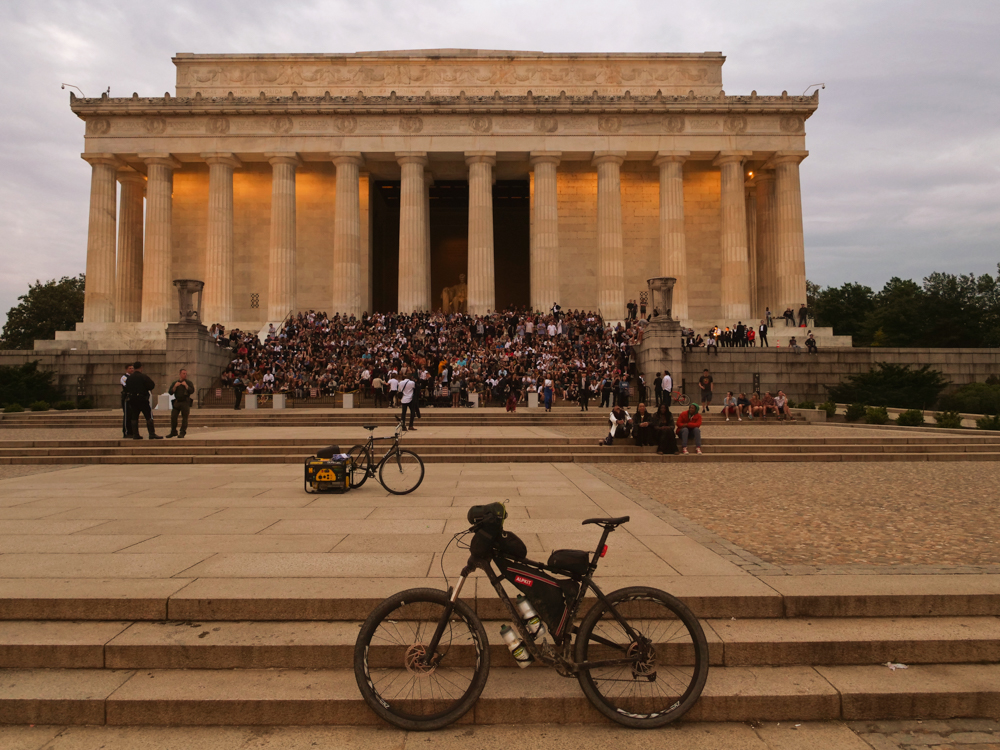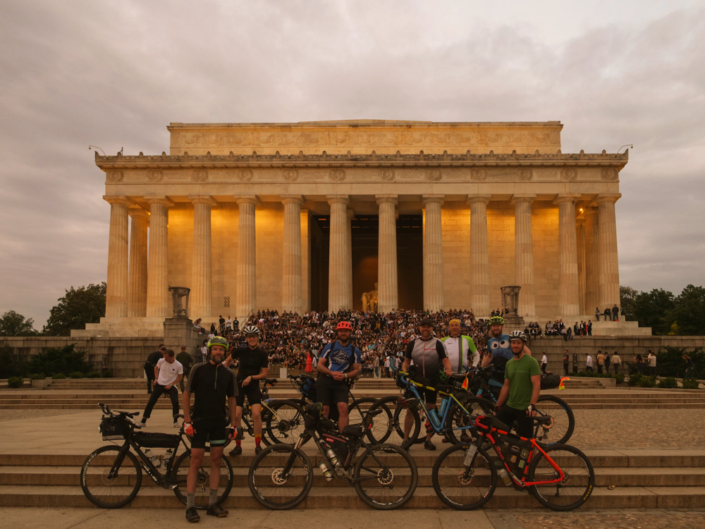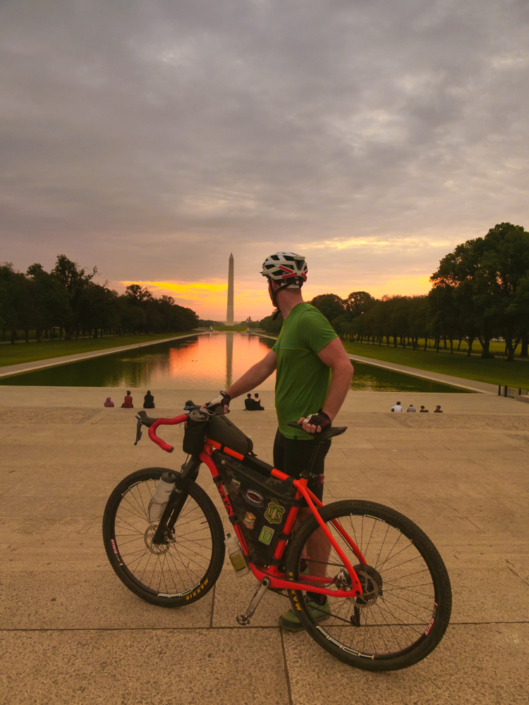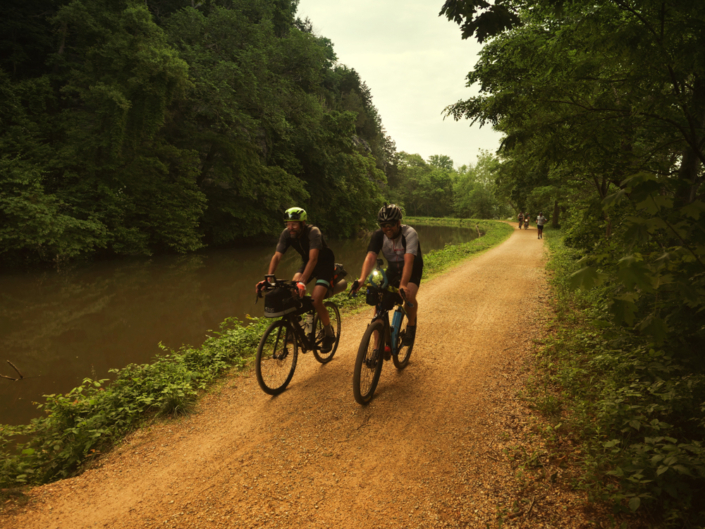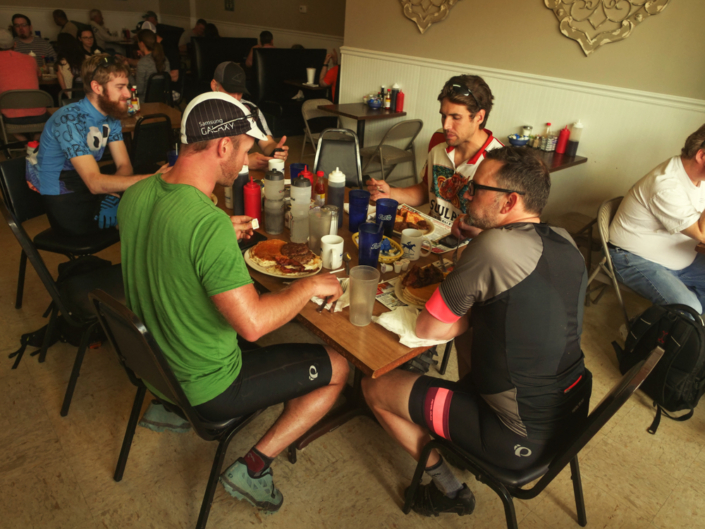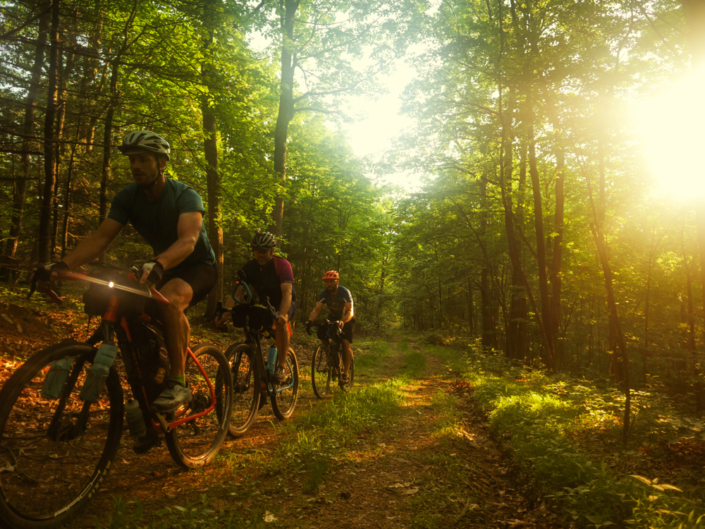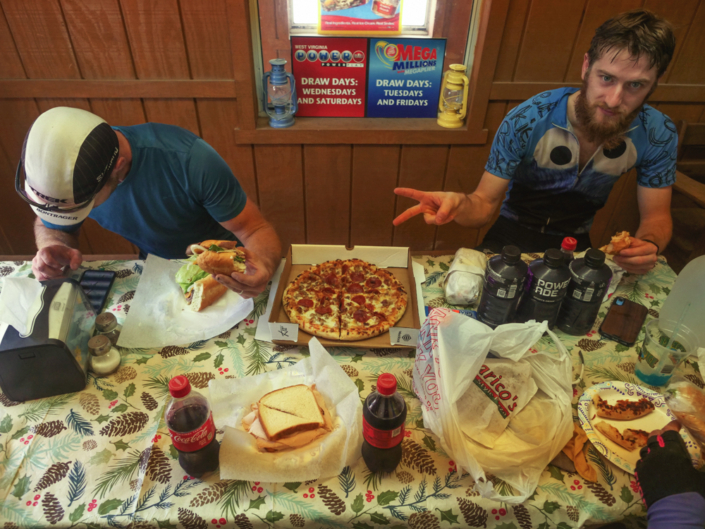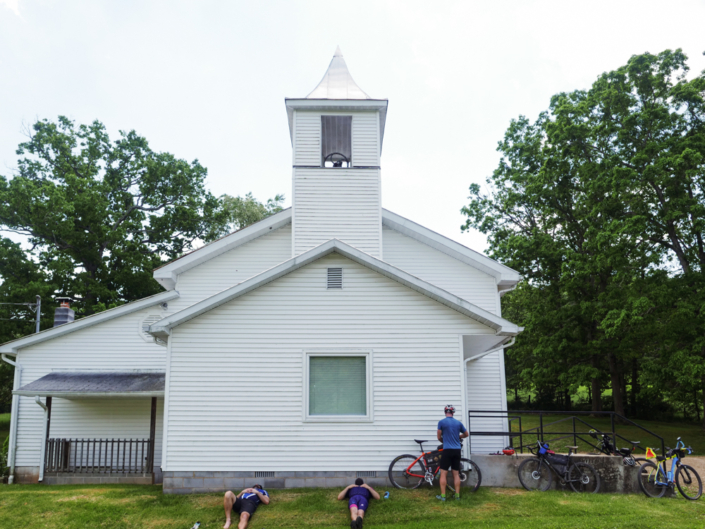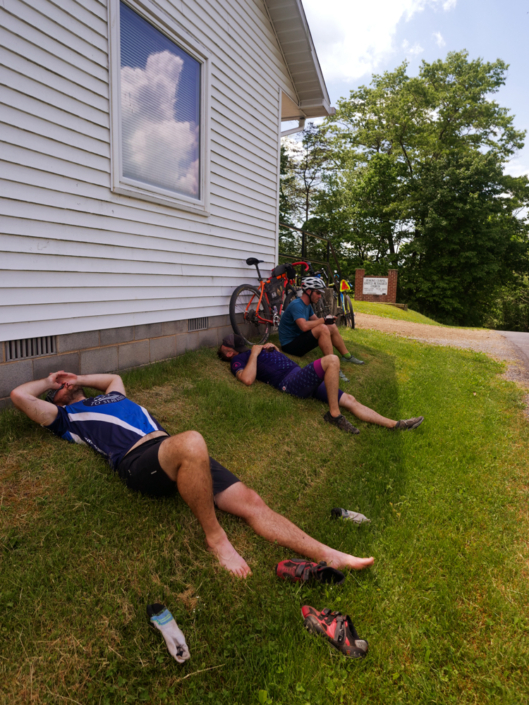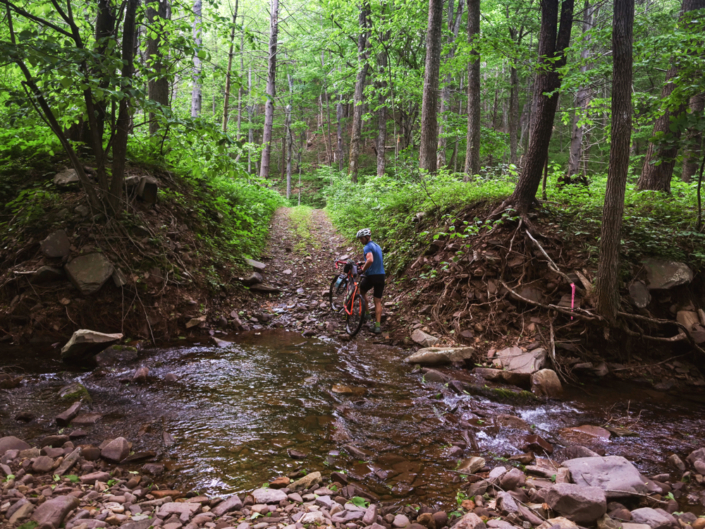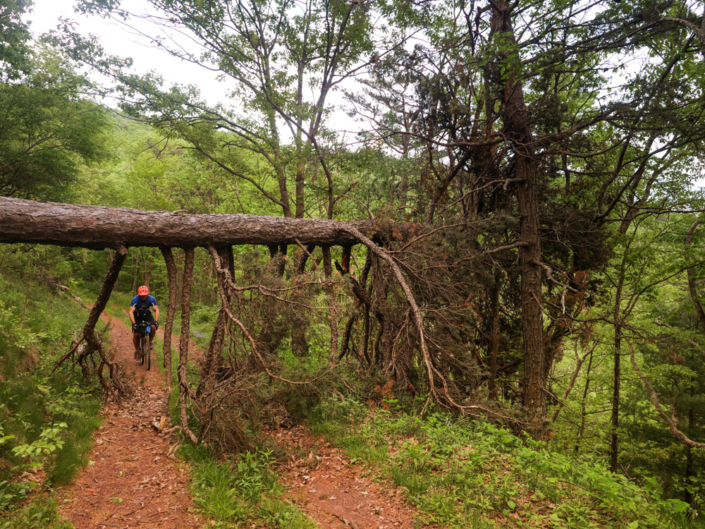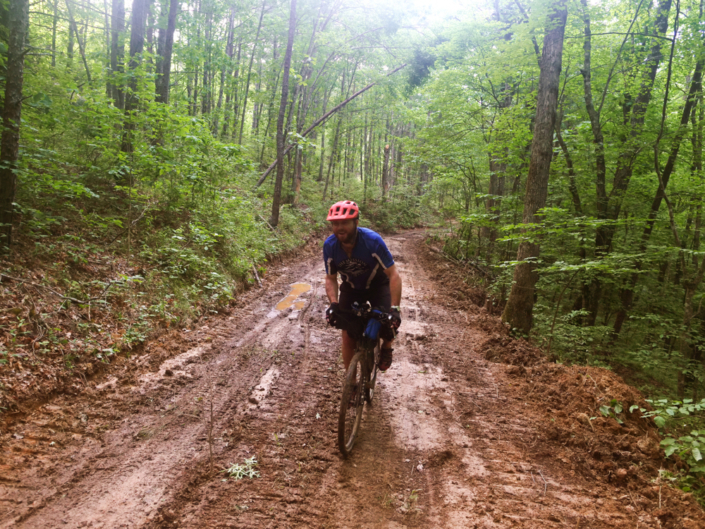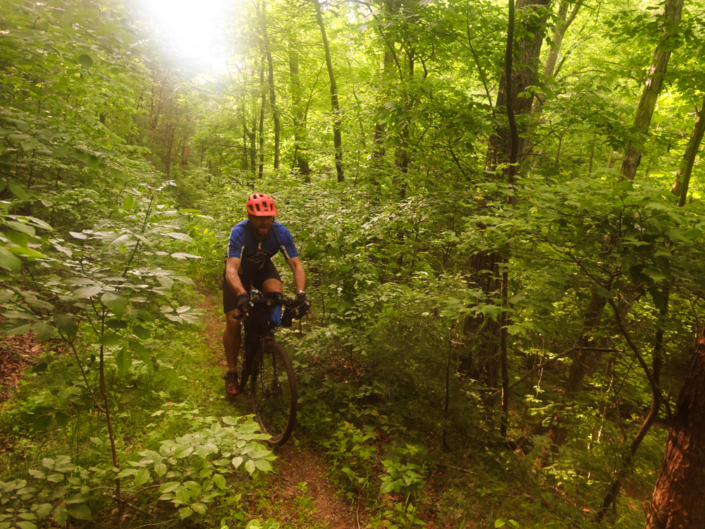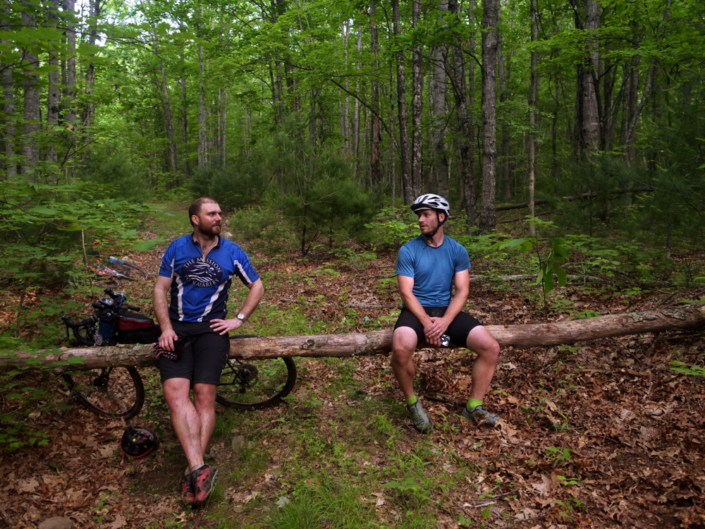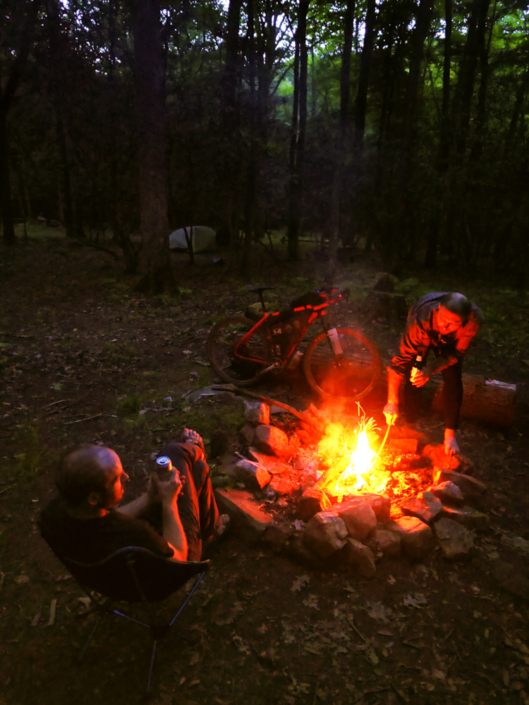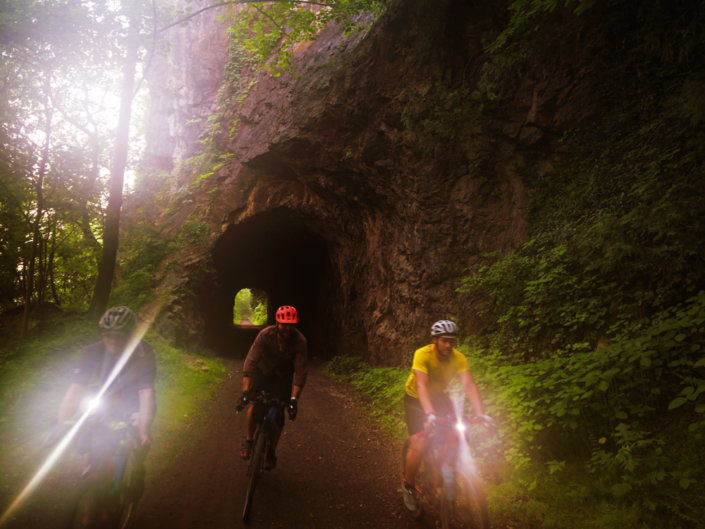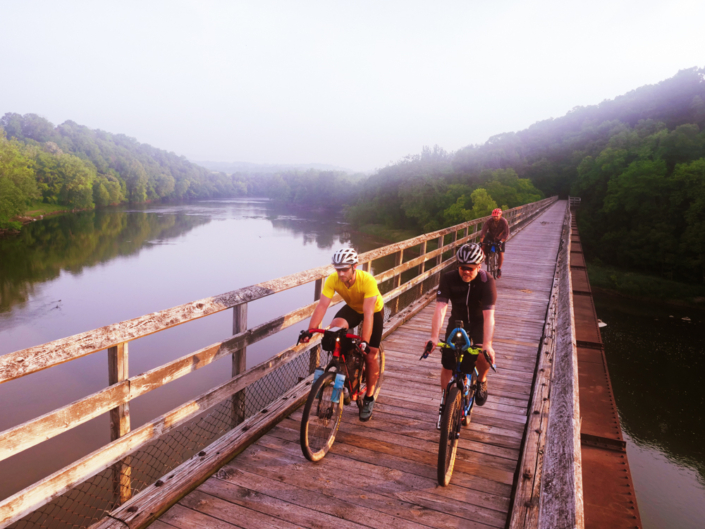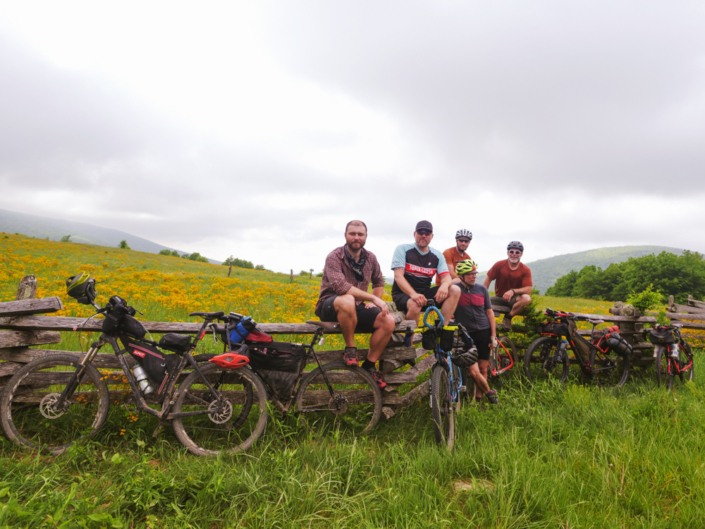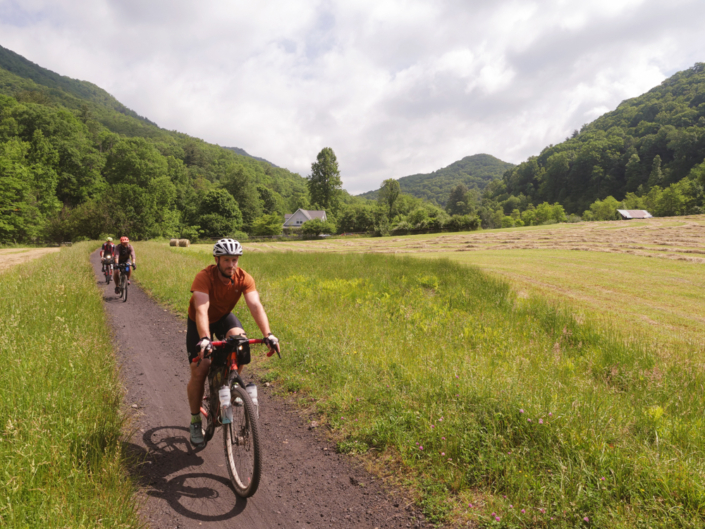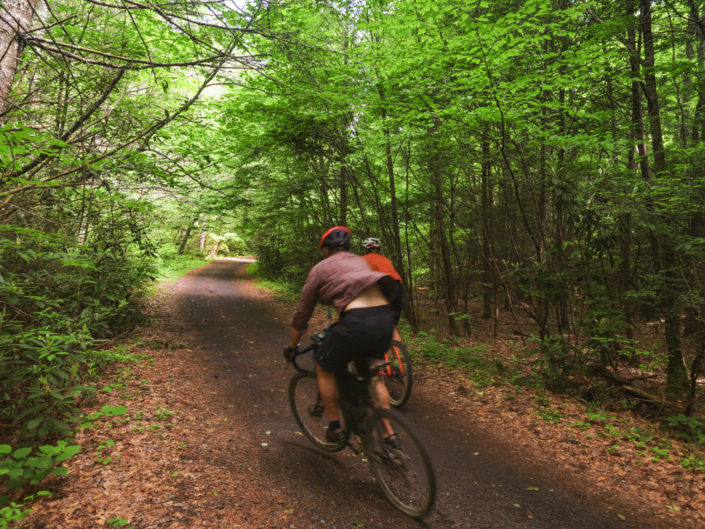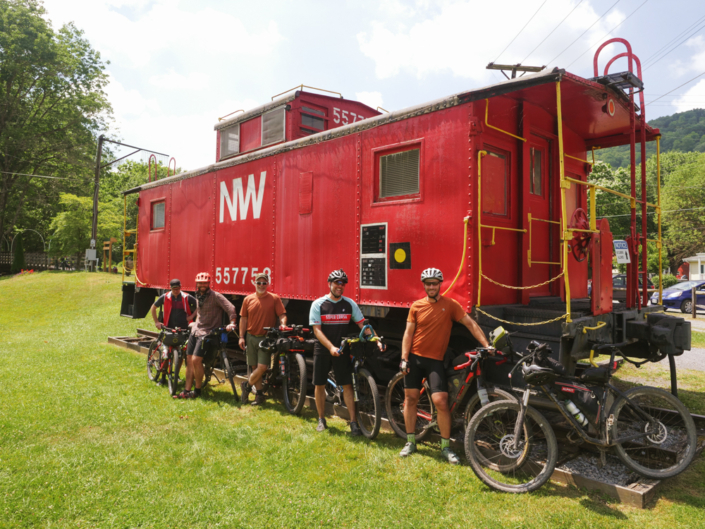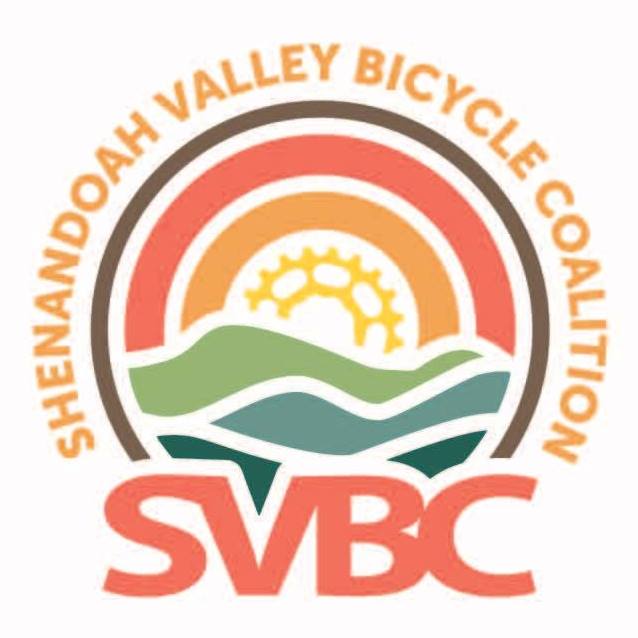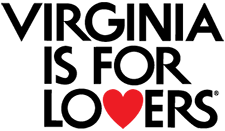Leon McCarron’s TransVA Ride, May 2019
By Leon McCarron
Insta Leon / @LeonMcCarron / Instagram TransVA Story
I’ve long felt that travelling by bicycle is one of the best ways to explore new places. When I was 22 I set off to try and cycle around the world and, despite being over-packed and underprepared, I was treated to a raw and beautiful experience; one in which I could choose my own speed, and had to earn each viewpoint and rest stop. It also introduced me to the kindness of strangers, which I found was a characteristic of our world that transcended any border or boundary I encountered.
It’s only in recent years that I’ve moved from cycle touring – loading all my belongings into panniers and sticking mostly to small roads to take me where I want to go – to the newer concept of bikepacking, which is, in the concise description attributed to it by the website which bears its name: “the synthesis of mountain biking and minimalist camping.” It’s a way of taking you away from roads, distilling down kit to the bare minimum needed to exist and, for the most part, staying away from anything too technical so that it’s theoretically accessible to those of us who want to be out in the wilds, but aren’t highly experienced mountain bikers.
If that sounds appealing, then there’s a whole world of exciting trails to go and explore. In May of 2019 I took my limited bikepacking experiences and put them to the test on the TransVirginia Bike Route. The TransVA is, as you might expect, a route that runs through the state of Virginia, from Washington DC to Damascus VA. It’s 550 miles of real backcountry riding, and is the brainchild of David Landis who has spent over a decade working on hiking and biking trails around the world. In his own words, he presents the TransVA as a route “focused on rideable, non-technical, unpaved terrain intended for multi-day trips carrying overnight gear.”
I joined David and a handful of other enthusiasts for the Grand Depart, in which we’d attempt to complete the route in less than a week. That’s significantly quicker than it is pitched at for most riders, but this was a group of fit and experienced bikepackers (everyone else) and those foolish enough to think they could keep up (me and my friend James, who I’d roped into coming from Vancouver.) Our journey began at the Lincoln Memorial in the nation’s capital at sunrise, with the backdrop of graduates from Georgetown University still partying out their last night of university. The first miles were an easy spin along the C&O Canal, which took us clear of the city. We crossed the Potomac River and entered the landscape that we’d been promised; rolling green Virginian hills thick with forest, and with strategically-placed resupply points along the way. That first day we rode just under 130 miles, which was about 90 miles further than I’d ridden in a single day all year. James was almost as exhausted as me. This was pleasing to note, as the rest of the riders all seemed concerningly fresh. I crawled into my tent that night happy and exhausted, which is the magic combination for bikepacking.
Every day on the tour was markedly different. This was my first time in Virginia, and I was pleased to see that none of the days ever blended into one, nor did the hills all start to look the same. We camped each night, and James and I relied on the kindness of David’s wife, Anna, and other family members who met us each night at the campgrounds. That saved us from carrying all our camping gear on the bikes as some of the other riders were doing and, given my lack of training, this was essential in making sure I could take part. That’s another part of the beauty of this route too, and of the bikepacking medium in general: that of being able to choose your level of challenge. The TransVirginia provides the big climbs on beautiful, safe remote tracks, and each rider decides how much they want to take on each day. This was one of the biggest physical challenges I’ve had in a while, and indeed on the third day I dropped out for the rest of the afternoon to rest a knee problem that, thankfully, resolved that night. The ride came to me during a time when I’d found myself particularly busy and preoccupied with work projects, and I’m now quite sure that there is no cure for stress quite like a gravel road and a good bike. It felt good to push myself really hard for the first time in a while, and even when I had to take a break for a few hours, it was pleasing to listen to my body and understand how it was reacting to the various elements of the trail.
After our first night in tents in the George Washington National Forest, we continued through the Shenandoah Valley, climbing dirt tracks and passing isolated farmhouses and fields of livestock. Very occasionally there was a hike-a-bike section – short bursts where it was rough enough to require getting off and pushing the bike – but these were always placed to connect glorious trails that led to shady gravel paths through forests. Two riders up ahead reported that they saw bears, and even for those of us not quite so lucky, we had hours at a time when there was very little reminder of the outside world all around. We camped by water where possible, like the beautiful Switzer Lake site, and doused ourselves in cold water to wash off the sweat and grime of each day.
Another highlight was the country stores that we passed a couple of times each day. These are small, family-run general stores and cafes that service the disparate local communities, and are perfectly suited to hungry cyclists. In each we’d eat our fill of greasy food, impressing the chefs at how much we could put away, and between mouthfuls we’d earnestly tell our stories of cycling across their state as they watched on bemusedly. These are not communities that see a lot of outsiders, especially visitors from outside the country, and I’m delighted to be able to share reports of the warm reception we received to accompany each burger and fried breakfast.
The high point of the route, rather literally, was a ridgeline ride to a lookout called Reddish Knob, from where we could see twenty or more miles across Virginia, and also out across the adjacent state of West Virginia. The weather held well for our week on the road, and even when the winds picked up on the higher passes, we still had sun for most of each day. At night it rained and we often began damp and shivering, but that never lasted long.
I rode mostly with David and James, and occasionally with some of the other riders as we leapfrogged each other throughout the day. Towards the end some friends of the project came to ride us in to Damascus. We followed the New River along rail trails, and on the final day took the glorious Creeper trail downhill all the way to the end, by the old caboose in the centre of Damascus.
Riding the Trans VA is not easy, and nor should it be. It is a real challenge, even for those well-used to bikepacking and dealing with a lot of elevation. The physicality, however, is a real selling point, and it is one of many reasons why the route proves to be such a success. It gives riders like myself an unparalleled window into this corner of the US, and a chance to ride through the stunning Shenandoah Valley. The trail passes through civil war battlegrounds, across empty farmland and over high wind-blown passes. It takes riders into ancient forests and past meadows bursting with wildflowers. It allows travellers to linger in friendly communities, and get a taste of real east coast hospitality. For anyone looking to move from cycle touring into something that is a little wilder and further from the hassles of traffic, this is a great starting point. Equally for bikepackers wanting to try their climbing legs on a well-designed route, this is the place to go. As for me: there’s still 53 miles of the route that I missed with a knee injury. So I’ll be back, ready to take on the hills once again.

